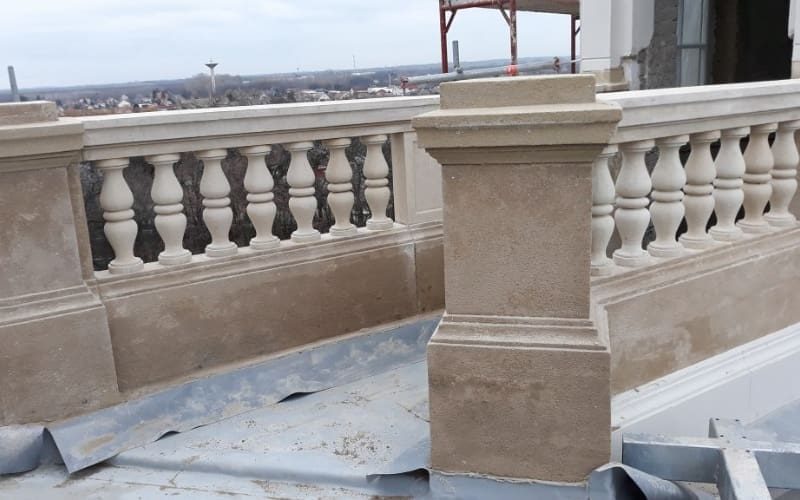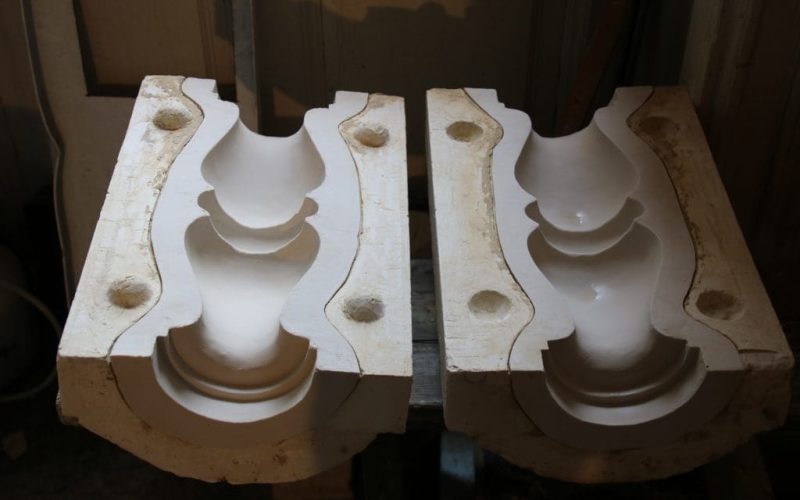
The stone works of the Castle of Tura have been revitalized
Built in 1883 by the plans of architect Gyula Bukovics, the Castle of Tura is a unique gem in Hungary. The castle representing French Neo-Renaissance style is 136 years old this year, and, thanks to the work of the professional art restoration teams, it will be restored to its original glory soon. The stone elements making up a significant part of the building have been renewed under the leadership of stone restorer Attila Kovács with the aim of recalling the state of the castle at the time of its construction. We have asked the expert, who was also working on the restoration of the stone elements of the Opera House, the Academy of Music, the Castle Bazaar, the Museum of Fine Arts or the St. Stephen’s Basilica, about the tricks and challenges of the work.
Where can we find the elements requiring restoration in the castle?
When we walk in the castle, we can meet masterpieces carved from stone everywhere, and their presence dominates outdoor as well as indoor spaces. From outside to inside, we can first notice the unique stone works on the footing of the building, the principal cornice, the rails, the cover stones of the chimneys and in certain parts of the clock tower. When entering the castle, stone is to be seen as a base material at the framing of the skylight windows, columns, stairs and rails.

How much of the stone elements required restoration?
Unfortunately, the stone elements were in such poor condition that, obviously, all of them needed to be restored. The worst affected were the outdoor rails, that is, the balustrades: nearly 80 percent of them had to be remanufactured, considering that their restoration was not possible due to their deteriorated state and significant lack. The case of the indoor stone elements is much more different due to their location: the walls of the castle protected them against the natural forces over the centuries, therefore the indoor works consisted basically of surface cleaning and minor repairs.
What type of stone elements are to be found in the castle?
Inside the building, mainly travertine (also known as Süttő limestone) was used during the construction of the castle: this type of limestone can be seen in case of the columns, stairs and rails. Coarse-grained marine limestone (also known as Sóskút type limestone) was used for making the outdoor stone elements. It is easy to carve, however, it is a rather porous and weak material. Quartz sandstone can also be discovered in the castle in minor amounts: this reddish material was used mainly for the footings.

What was the process of restoration like?
Firstly, all surfaces were cleaned thoroughly, during which they were freed from biological contamination and the stone corrosion layer. After that we removed the previous corrections (if there were any) and prepared the surface for working. Then, we replaced the missing parts with special restoring mortar, and, at the end of the procedure, we impregnated the completed surface so that precipitation cannot damage it. However, some elements had been damaged over time to such an extent that no replacement could have been effective or feasible, therefore we remanufactured those. So as to remanufacture them, we first needed an intact element, on the basis of which we could make the silicone-caoutchouc mould. We poured out the mould with restoring mortar, then, following its drying, we reshaped the molds with the aim of providing their surface with stone-like appearance almost identical to the original. Restoring mortar is a mixture of limestone rubble, hydraulic binders and oxide paints. It is more durable than the original elements, however, it bears a strong resemblance to the original stone elements in appearance.
I feel very lucky as I could work on magnificent buildings during my career, and it is hard to pick just one from them. I had my very first big job in the year of my state examination, and it was connected to the restoration of the Opera House. After that, I had the opportunity to work on imposing buildings like the Academy of Music, the Castle Bazaar, the Museum of Fine Arts or the St. Stephen’s Basilica.



